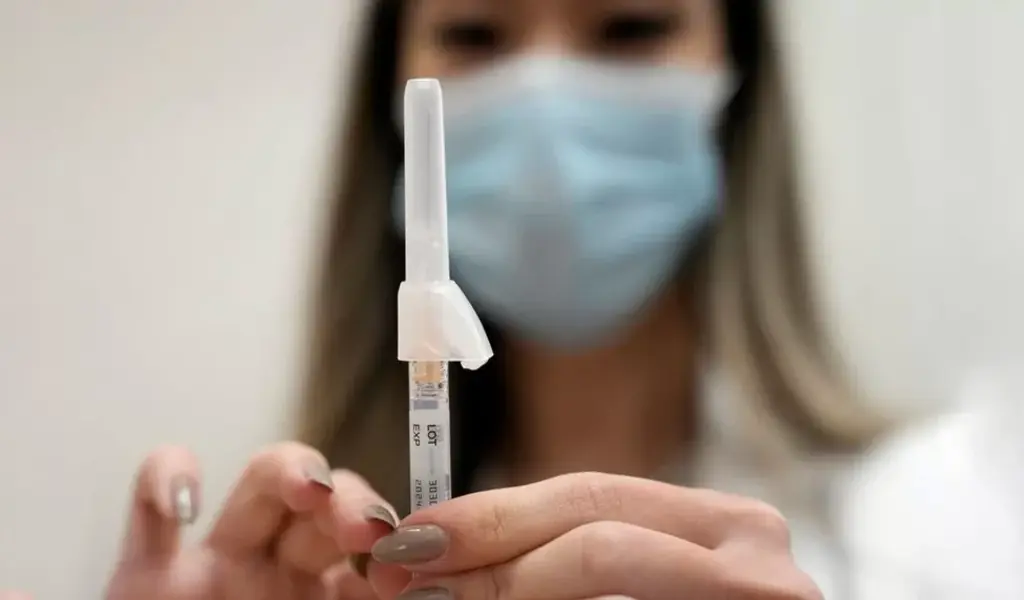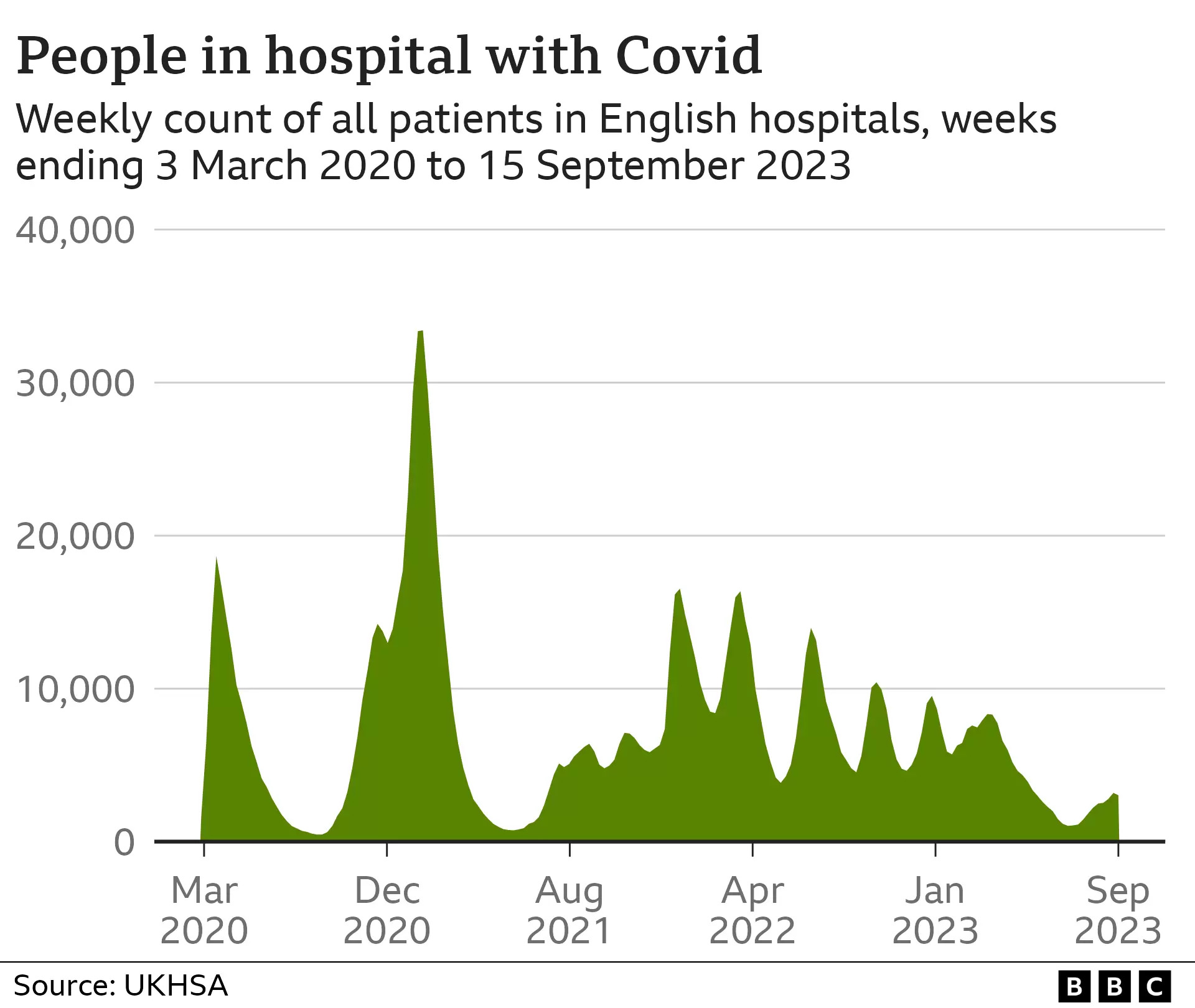Covid-19
Living With Era Of COVID-19: What Does The Future Hold?

(CTN NEWS) – As we find ourselves in the autumn of 2023, some familiar echoes from 2021 are resonating in the air.
Hospitalizations are on the rise, Google searches about COVID have doubled in just a month, and booster vaccines are being administered sooner than expected due to the emergence of a new variant. In many ways, it feels like déjà vu.
But is it? How much cause for concern do we really have in this evolving landscape of COVID-19?
The Unpredictable Nature of the Virus
Marjorie, a resident of Pembrokeshire, experienced the unpredictability of COVID firsthand. After navigating the entire pandemic without contracting the virus, she fell ill this month, believing her natural immunity would protect her.
Her symptoms – a headache, muscle pain, and a loss of smell and taste – were accompanied by an unexpected weakness and lethargy.
Quantifying the exact number of COVID cases this autumn has become increasingly challenging. Drive-in testing sites have closed, free lateral flow test supplies have dwindled, and the Office for National Statistics infection survey has been discontinued.
However, one indicator we still have is the rising number of people testing positive in hospitals across the UK. Stuart McDonald, an actuary at LCP, points out that this trend underscores the virus’s continued ability to make people seriously ill.
Hospitalization figures, though, only provide a rough estimate of the virus’s prevalence and its trajectory.
The likelihood of contracting COVID and the severity of the illness depend on a complex interplay of factors, including genetics, age, lifestyle, and environmental conditions.
The Complexity of Immunity
Research published in the journal Nature earlier this year indicates that approximately 10% of the population carries a gene that enables them to recognize and eliminate the virus before symptoms manifest.
People’s varying vaccination histories and previous exposure to COVID over the past four years have resulted in differing levels of immunity. As McDonald notes, there is no one-size-fits-all immunity profile in the country.
Unfortunately, immunity wanes over time after infection or vaccination, unlike diseases such as measles or polio, where childhood vaccines offer lifelong protection.
COVID protection may only last a few months at best, although data shows that protection against severe disease is more enduring.
The Shape-Shifting Virus
COVID-19 is distinct from other viruses like measles or polio because it is constantly evolving.
Previous waves were driven by different variants with multiple genetic changes, altering the virus’s behavior, and sometimes making it harder for our immune systems to recognize and combat it.
The emergence of the Omicron variant in late 2021 exemplified this adaptability, infecting millions but resulting in fewer hospitalizations and deaths. Subsequently, smaller waves were driven by Omicron’s close relatives, or subvariants.
In August 2023, scientists began monitoring yet another version, known as BA.2.86, with numerous mutations. While only a few cases have been confirmed in the UK, early lab tests suggest it may be less contagious and less capable of evading immunity than initially feared.
Boosting Immunity and Managing Expectations
In response to the emergence of BA.2.86, authorities expedited the autumn COVID booster campaign to protect the most vulnerable this winter.
However, these new shots are primarily available to individuals over 65 and those with specific health conditions.
This strategic decision is based on the fact that younger individuals who have already been vaccinated or infected tend to experience milder symptoms, akin to a common cold.
Looking Ahead: Living with COVID
Professor Alex Richter suggests that it’s time to start thinking of COVID more like the flu, with new strains emerging each year and updated vaccines tailored to the latest variants.
COVID will continue to pose a threat to the most vulnerable and will require hospitals to manage periodic surges in infections.
Richter notes, “We have bad flu years and good flu years. There’s a good chance that once every four or five years, we’re going to have a bad dose [of COVID], and we are going to need to go to bed for a few days, otherwise most of the time, for most of us, I think it will be OK.”
While every encounter with the virus carries some risk, research suggests that with each subsequent infection, immunity becomes stronger and broader, leading to milder illnesses and shorter recovery times.
Conclusion: Embracing Adaptability
As we reflect on the evolving landscape of COVID-19, it becomes apparent that the virus is not going away. Instead, it is gradually becoming part of the backdrop of our everyday lives.
While uncertainties persist, our collective ability to adapt and respond to new variants offers hope for managing the ongoing challenges posed by COVID-19.
RELATED CTN NEWS:
Uyghur Scholar Rahile Dawut Receives Life Sentence For ‘Endangering State Security’ In China
CDC’s Independent Vaccine Advisers Recommend Maternal Vaccine To Protect Infants From RSV
India’s Sports Minister Trip To Asian Games In Hangzhou Canceled Amid Visa Dispute
































